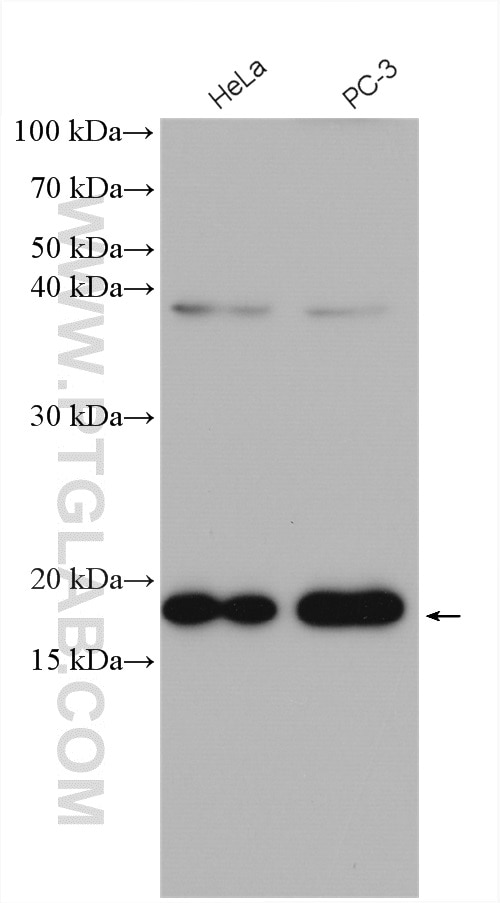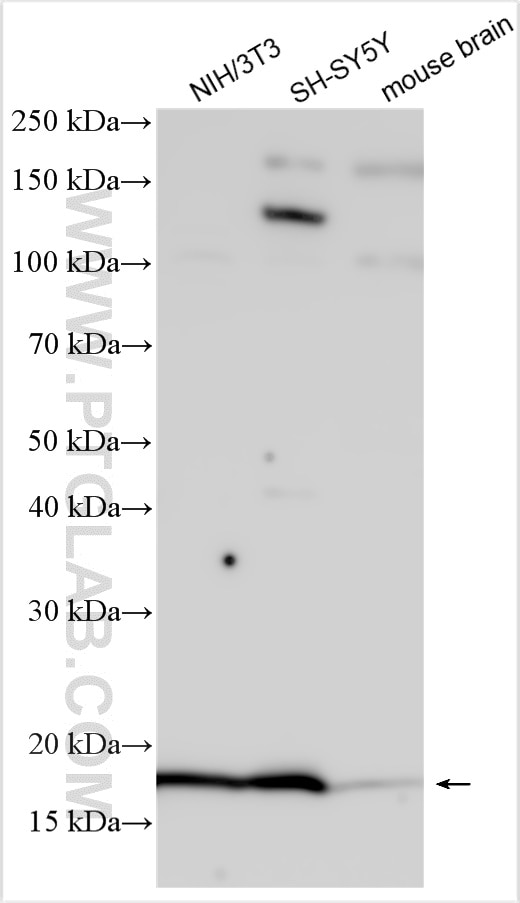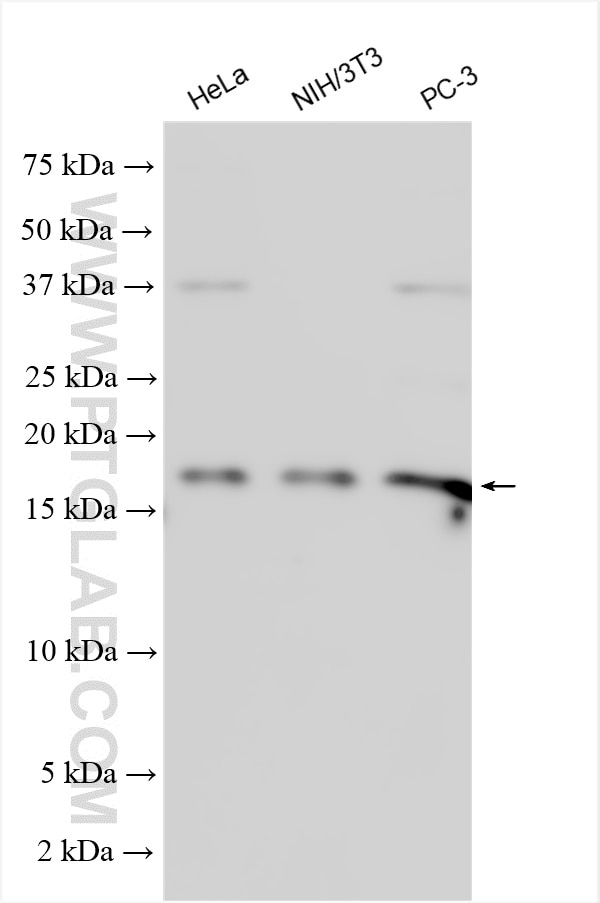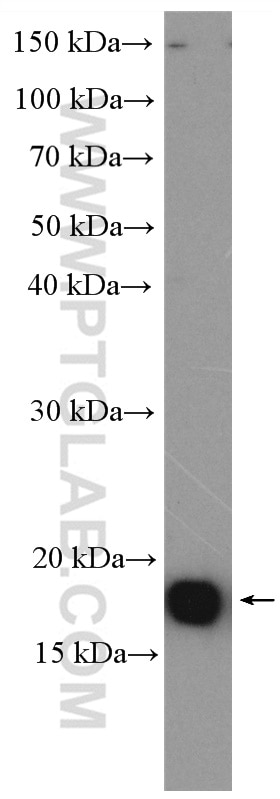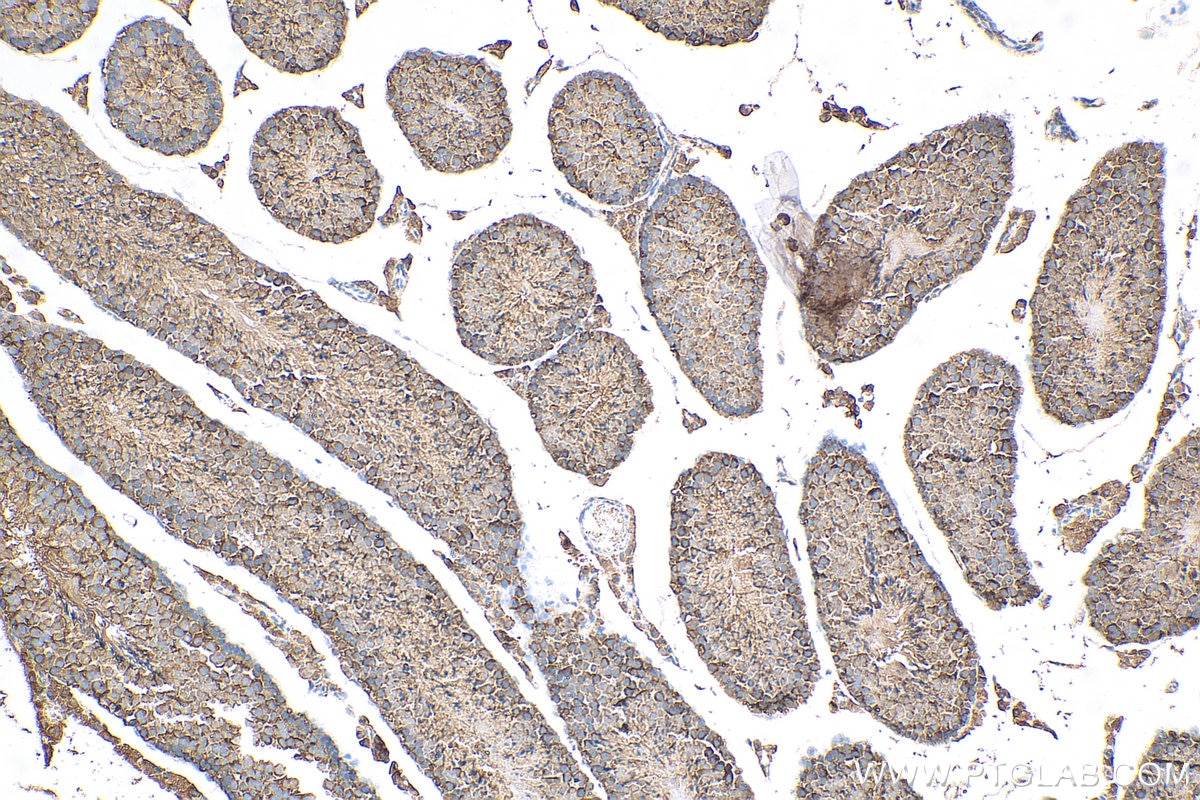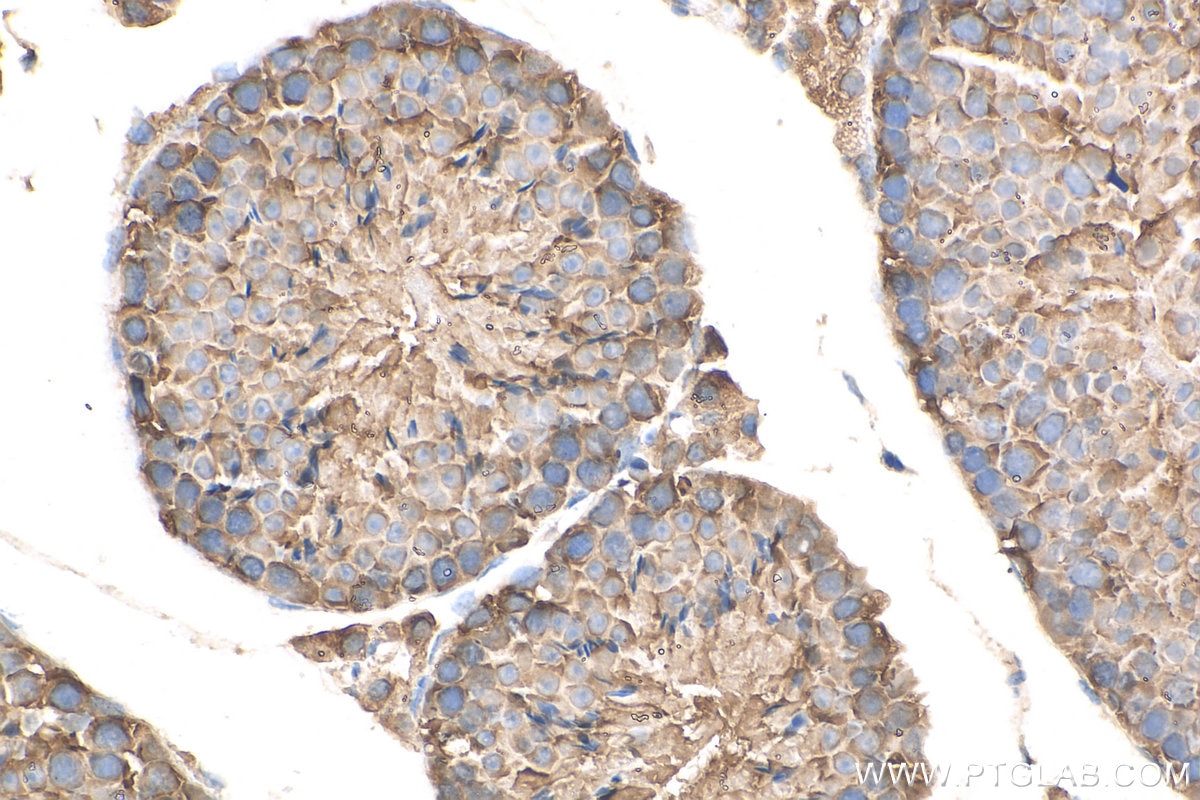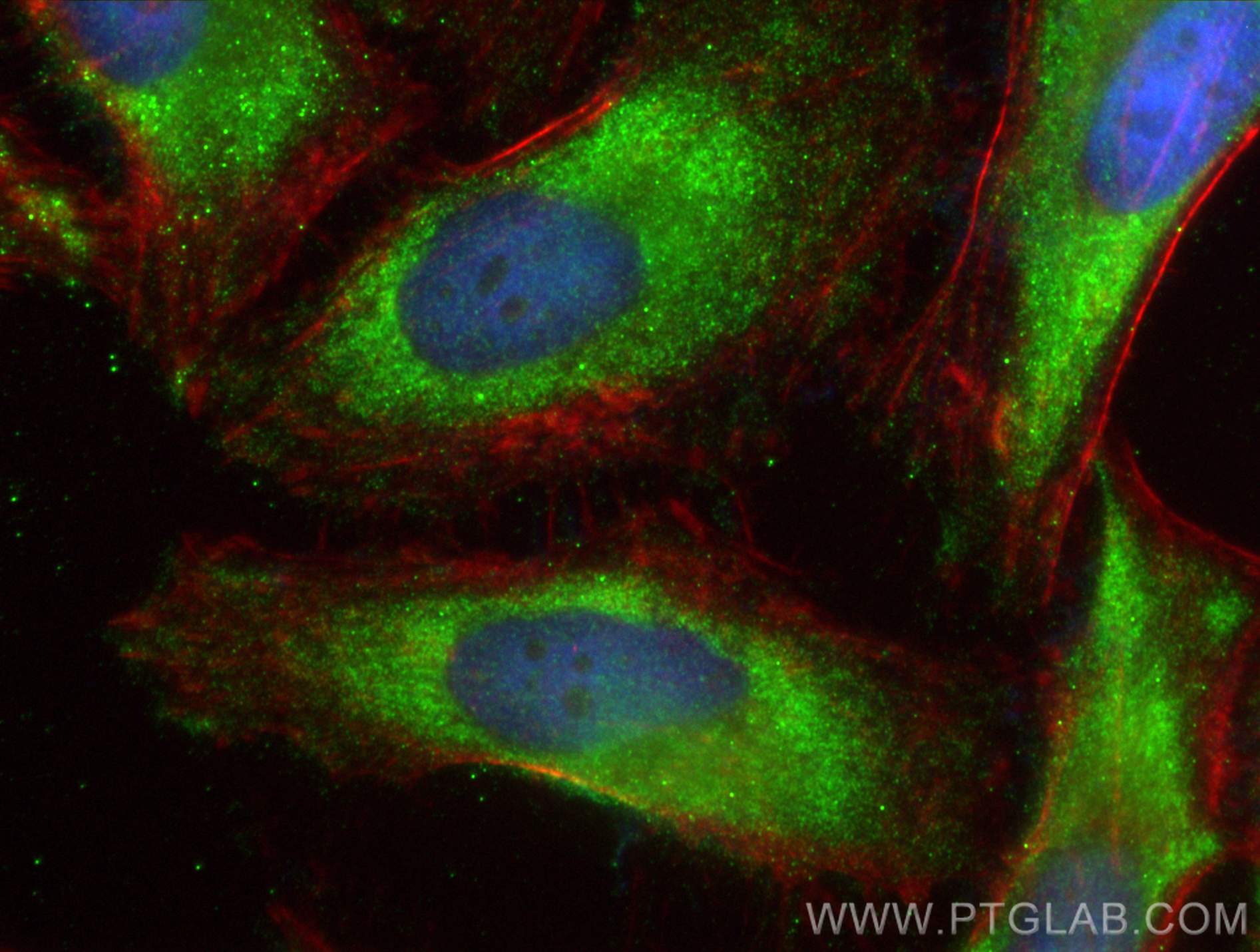- Phare
- Validé par KD/KO
Anticorps Polyclonal de lapin anti-EIF5A
EIF5A Polyclonal Antibody for WB, IHC, IF/ICC, ELISA
Hôte / Isotype
Lapin / IgG
Réactivité testée
Humain, rat, souris
Applications
WB, IHC, IF/ICC, IP, ELISA
Conjugaison
Non conjugué
N° de cat : 11309-1-AP
Synonymes
Galerie de données de validation
Applications testées
| Résultats positifs en WB | cellules HeLa, cellules NIH/3T3, cellules PC-3, cellules SH-SY5Y, tissu cérébral de souris |
| Résultats positifs en IHC | tissu testiculaire de souris, il est suggéré de démasquer l'antigène avec un tampon de TE buffer pH 9.0; (*) À défaut, 'le démasquage de l'antigène peut être 'effectué avec un tampon citrate pH 6,0. |
| Résultats positifs en IF/ICC | cellules HeLa, |
Dilution recommandée
| Application | Dilution |
|---|---|
| Western Blot (WB) | WB : 1:5000-1:50000 |
| Immunohistochimie (IHC) | IHC : 1:50-1:500 |
| Immunofluorescence (IF)/ICC | IF/ICC : 1:50-1:500 |
| It is recommended that this reagent should be titrated in each testing system to obtain optimal results. | |
| Sample-dependent, check data in validation data gallery | |
Applications publiées
| KD/KO | See 1 publications below |
| WB | See 5 publications below |
| IHC | See 1 publications below |
| IF | See 1 publications below |
| IP | See 1 publications below |
Informations sur le produit
11309-1-AP cible EIF5A dans les applications de WB, IHC, IF/ICC, IP, ELISA et montre une réactivité avec des échantillons Humain, rat, souris
| Réactivité | Humain, rat, souris |
| Réactivité citée | Humain, souris |
| Hôte / Isotype | Lapin / IgG |
| Clonalité | Polyclonal |
| Type | Anticorps |
| Immunogène | EIF5A Protéine recombinante Ag1849 |
| Nom complet | eukaryotic translation initiation factor 5A |
| Masse moléculaire calculée | 18 kDa |
| Poids moléculaire observé | 18 kDa |
| Numéro d’acquisition GenBank | BC001832 |
| Symbole du gène | EIF5A |
| Identification du gène (NCBI) | 1984 |
| Conjugaison | Non conjugué |
| Forme | Liquide |
| Méthode de purification | Purification par affinité contre l'antigène |
| Tampon de stockage | PBS with 0.02% sodium azide and 50% glycerol |
| Conditions de stockage | Stocker à -20°C. Stable pendant un an après l'expédition. L'aliquotage n'est pas nécessaire pour le stockage à -20oC Les 20ul contiennent 0,1% de BSA. |
Informations générales
Translation of messenger RNA (mRNA) to protein in eukaryotesis a crucial process in protein biosynthesis, in which initiation of translation involves interaction of different eukaryotic translation initiation factors (eIFs), ribosome subunits and mRNAs. Eukaryotic translation initiation factor 5A (EIF5A) is one of the eIFs involved in translation initiation. EIF5A has a essential role in cell viability and the only protein known to contain the amino acid residue hypusine, formed by post-translational modification of a specific lysine residue. Firstly identified as a translation initiation factor, it also has a function in the elongation step of translation.
Protocole
| Product Specific Protocols | |
|---|---|
| WB protocol for EIF5A antibody 11309-1-AP | Download protocol |
| IHC protocol for EIF5A antibody 11309-1-AP | Download protocol |
| IF protocol for EIF5A antibody 11309-1-AP | Download protocol |
| Standard Protocols | |
|---|---|
| Click here to view our Standard Protocols |
Publications
| Species | Application | Title |
|---|---|---|
J Cancer EIF5A expression and its role as a potential diagnostic biomarker in hepatocellular carcinoma. | ||
J Ovarian Res Proteomic analysis implicates that postovulatory aging leads to aberrant gene expression, biosynthesis, RNA metabolism and cell cycle in mouse oocytes | ||
Oncol Lett SHCBP1 contributes to the proliferation and self‑renewal of cervical cancer cells and activation of the NF‑κB signaling pathway through EIF5A | ||
Nat Chem Biol ENO1 promotes liver carcinogenesis through YAP1-dependent arachidonic acid metabolism
| ||
Oral Dis ZNF331 Represses the Proliferation of Head and Neck Squamous Cell Carcinoma via Co-Repressor TRIM28 | ||
BMC Cancer Multi-omics analysis reveals the impact of YAP/TEAD4-mediated EIF5A1 expression on mitochondrial apoptosis and bladder cancer progression |
